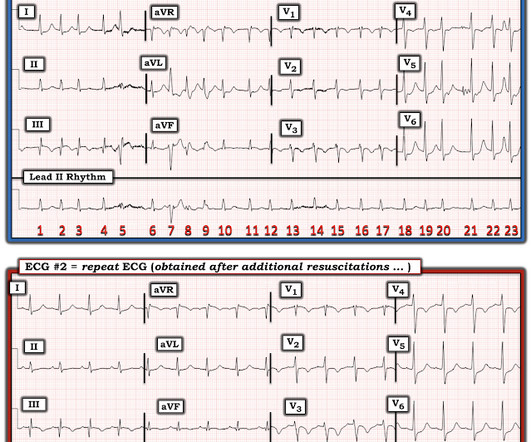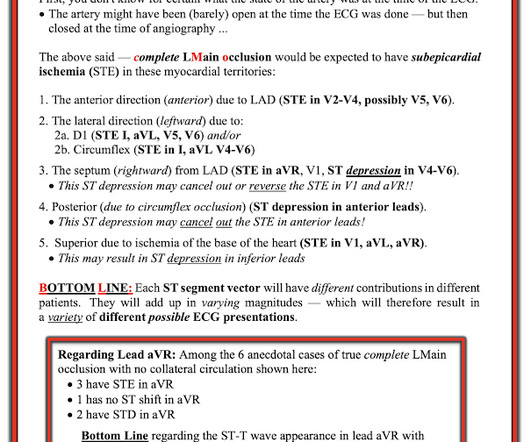What is this ECG finding? Do you understand it before you hear the clinical context?
Dr. Smith's ECG Blog
FEBRUARY 2, 2024
We periodically review this intriguing ECG finding that is best known for its association with hypothermia — but which may also be seen in association with a number of other entities, including acute infarction and cardiac arrest. My Comment addresses a few additional aspects of this phenomenon. Baseline artifact is no longer present.













Let's personalize your content